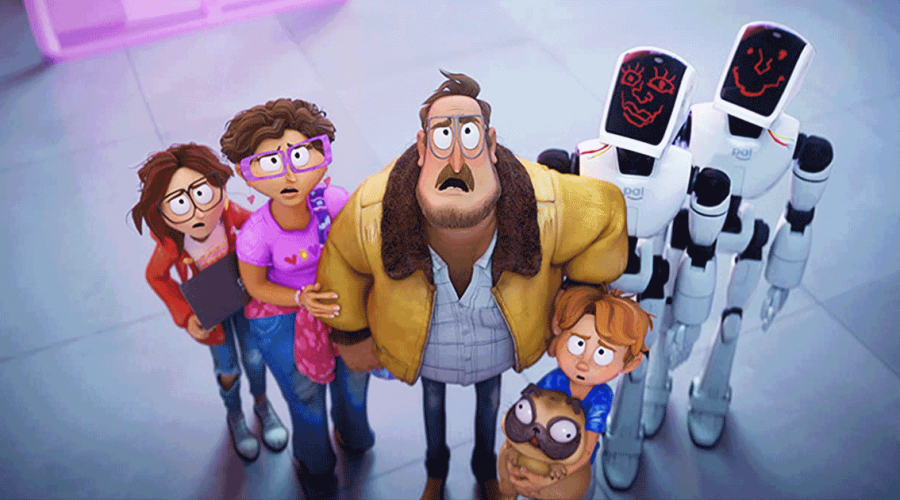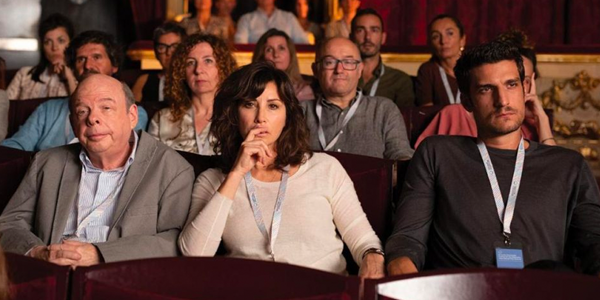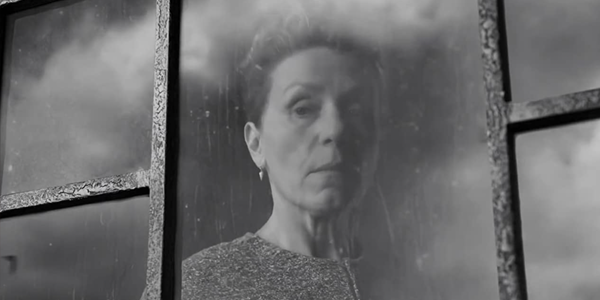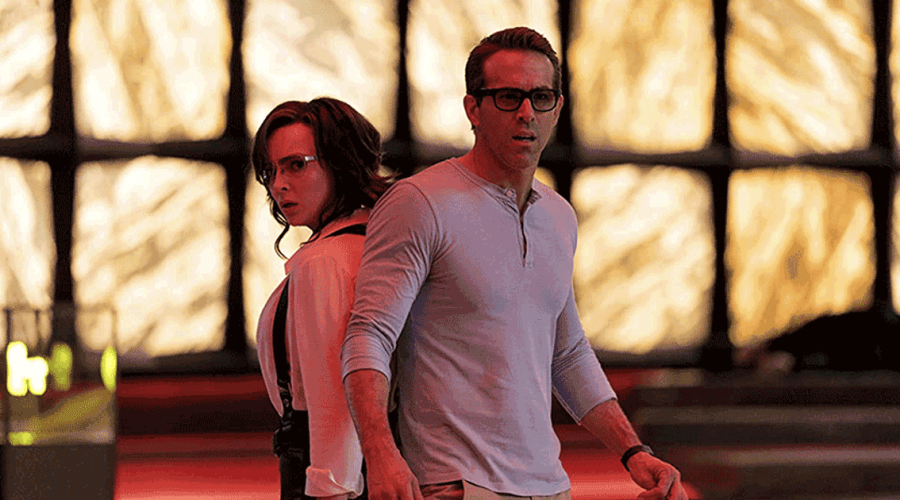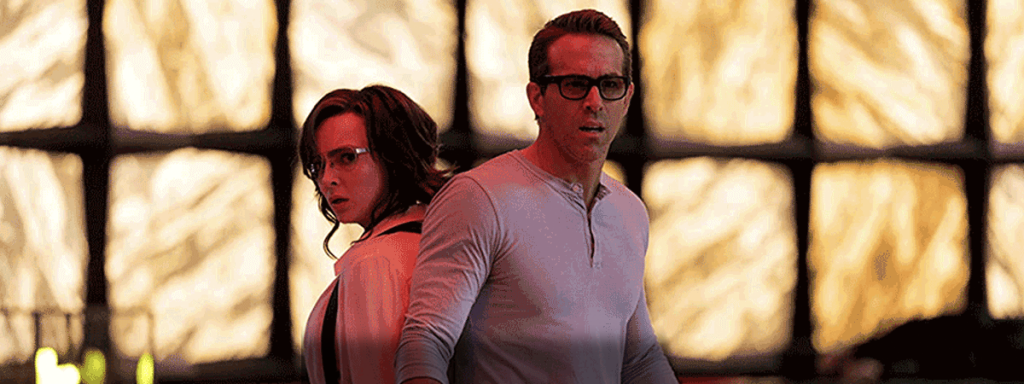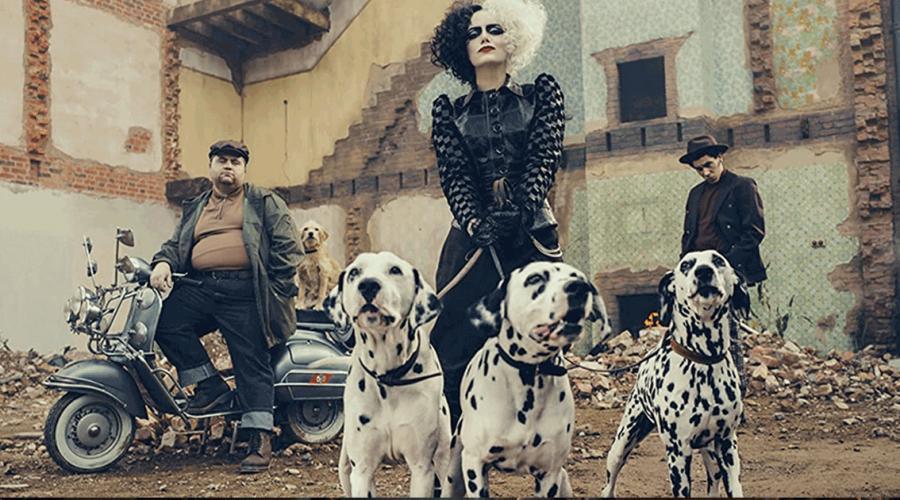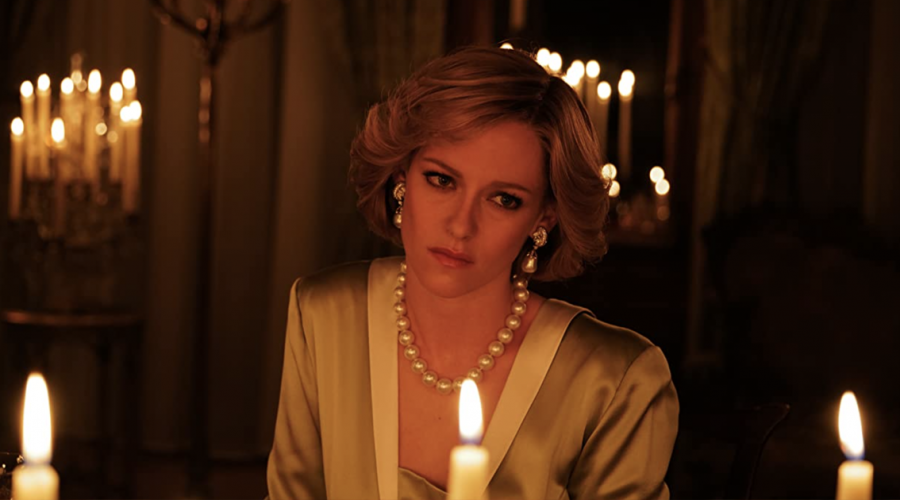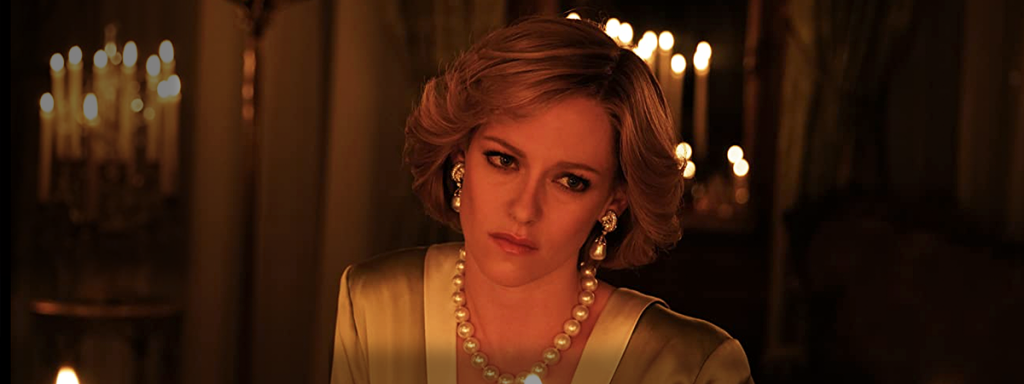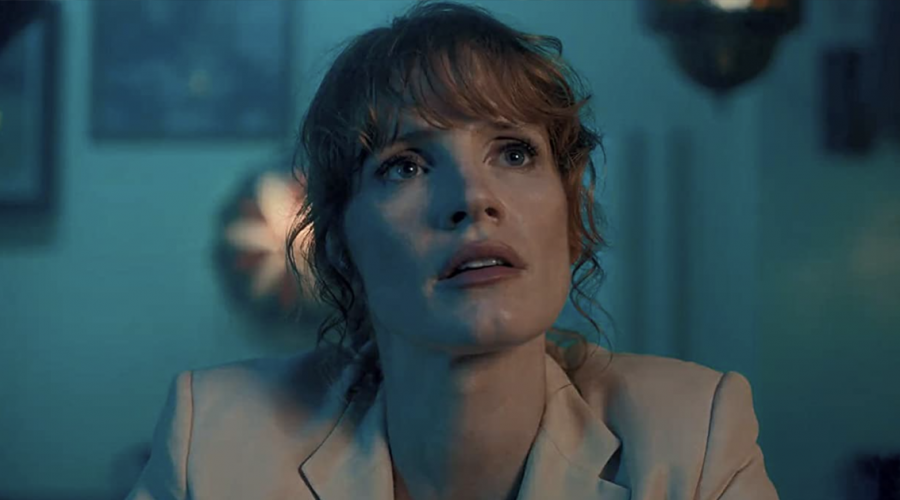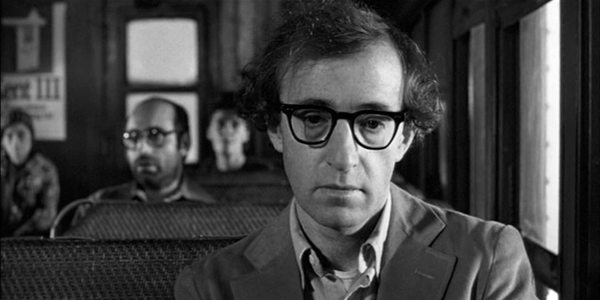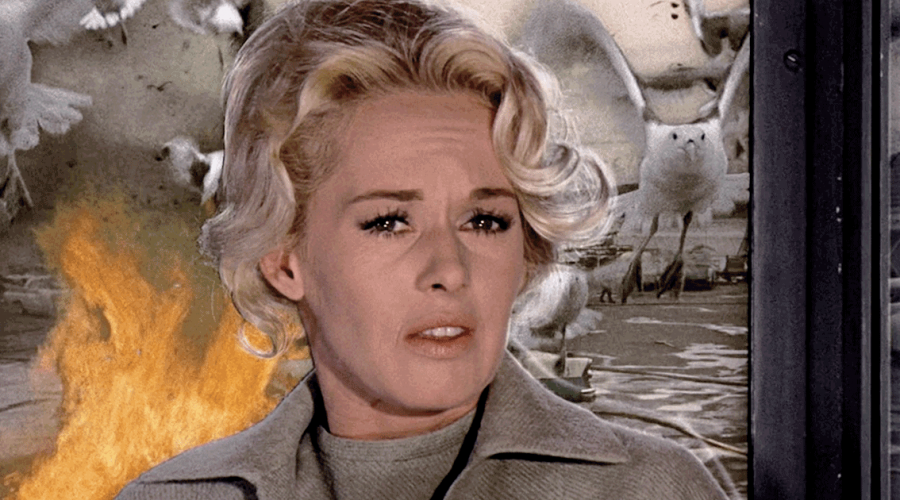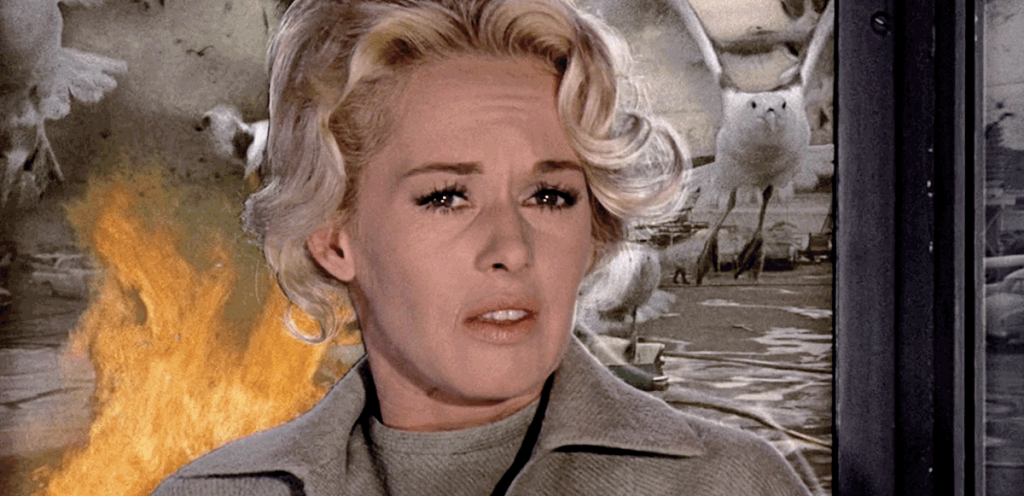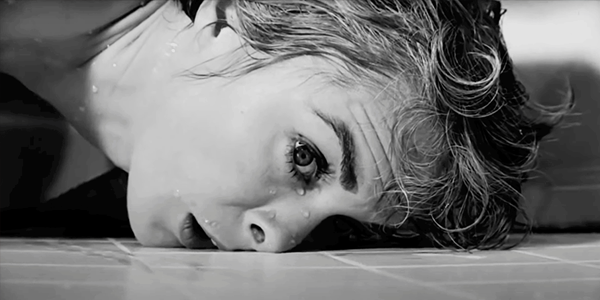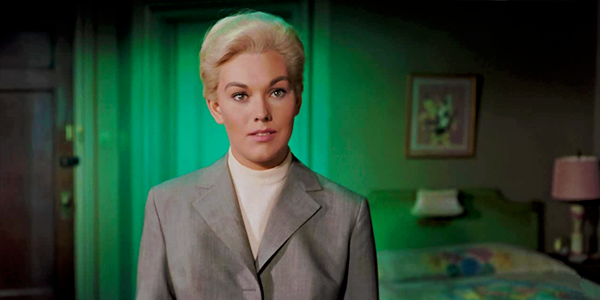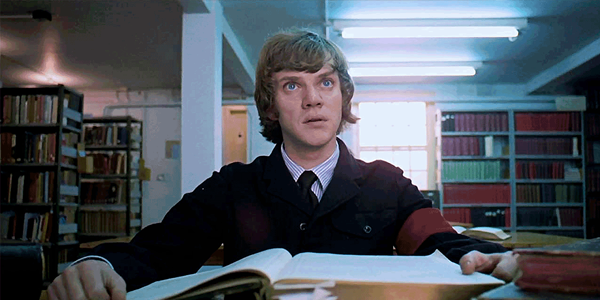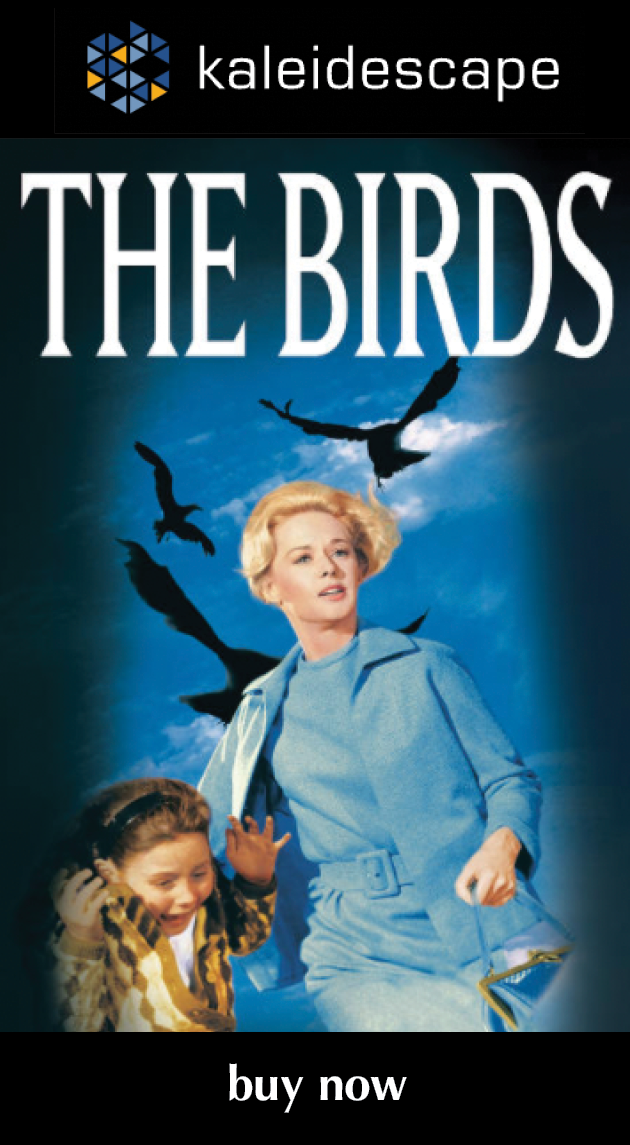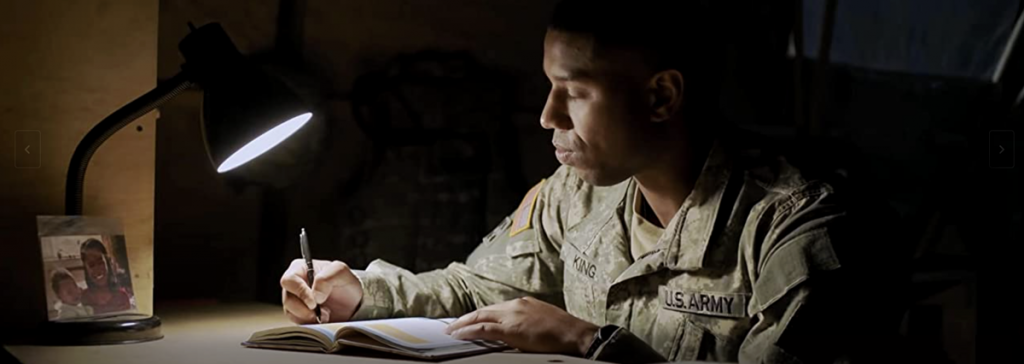Review: The Mitchells vs. the Machines
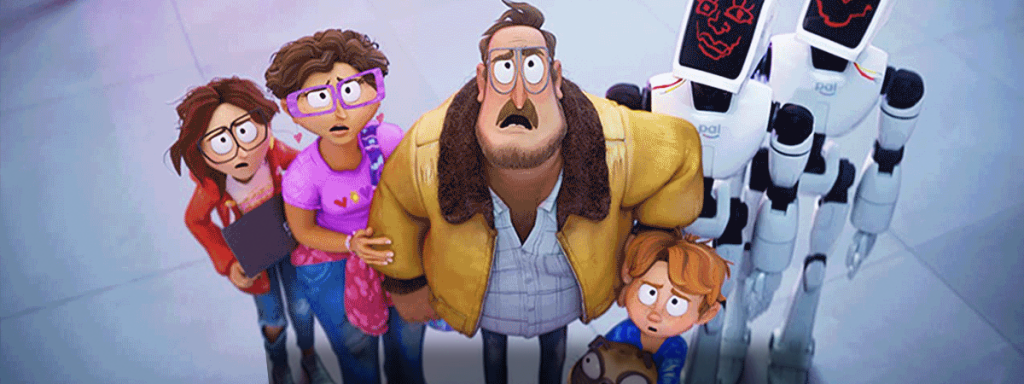
review | The Mitchells vs. the Machines
Never having gotten the attention it deserves, this Sony effort is a cut above the usual animation fare on Netflix
by Dennis Burger
May 31, 2021
It’s not hard to imagine an alternate reality in which The Mitchells vs. the Machines is the hottest new title on Sonyflix or Sony+ or whatever Sony might have named its own studio-specific streaming platform, if only it had made it out of the gate before Disney, Warner, Paramount, and NBCUniversal flooded the market and exhausted the public’s patience for such solipsistic subscription services. In our reality, what would have been one of the most highly publicized animated blockbusters of 2020 was instead dumped unceremoniously onto Netflix and forfeit to the whims of its inscrutable algorithms.
That’s a shame because The Mitchells vs. the Machines deserves more of your attention than does the typical Netflix animated feature. The involvement of Phil Lord and Christopher Miller is your first clue to that. In addition to writing and directing the surprisingly good Lego Movie and producing Spider-Man: Into the Spider-Verse—one of the best animated pictures of the past few years—the duo’s brand has become something of a seal of approval. So the fact that this comes from their production umbrella is significant. There’s also the fact that The Mitchells was written and directed by Mike Rianda and Jeff Rowe, both known for their work on the excellent Disney Channel/Disney XD series Gravity Falls.
Mush those two aesthetics together and you’ll get a good idea of the overall vibe of this energetic and delightfully weird animated adventure. On the one hand, The Mitchells vs. the Machines owes a lot to the look of Into the Spider-Verse, especially in the way it blends 3D animation with 2D tinkering, the results of which are a sort of best-of-both-worlds mashup. It’s not as if the two films look like they take place in the same reality—this one definitely exists within its own creative landscape—but you can see many of the techniques developed for Spider-Verse employed here in new and creative ways. On the other hand, Rianda and Rowe bring such a genuinely awkward and eccentric energy to The Mitchells vs. the Machines that it would be difficult to confuse it with your typical Lord and Miller production.
The story revolves around a family of misfits who find themselves pressganged into saving the world after a Silicon Valley entrepreneur unwittingly unleashes the robot apocalypse in the process of attempting to give physical form to his AI digital assistant, cheekily named PAL. We’re told from the get-go that the Mitchells are dysfunctional weirdos but the thing that makes the movie work is that they aren’t. They’re just a normal family, with a normal family dynamic and normal family problems. What makes them seem like oddballs, especially in their own eyes, is the contrast between their real personalities and the illusion of homogenized perfection constantly shoved down their throats by social media.
But if you’re expecting subtle social commentary here, you’re barking up the wrong animated tree. The Mitchells vs. the Machines is an overt parable about the current state of society and the damage we’re doing to ourselves by submitting to the tyranny of corporate-sponsored groupthink. Sometimes the dialogue gets a little too on-the-nose in broadcasting this message but that’s honestly one of the film’s few significant flaws.
And you may be thinking to yourself that there’s a gross irony in the fact that this technological wonder of a film, produced by one corporate giant and now distributed by another, has the cajones to touch on the pitfalls of technology and the dangers of corporate greed. But grappling with this is one of the few subtle points made by The Mitchells vs. the Machines. The message isn’t that technology is bad in and of itself, that corporations are an inherent threat. Instead, what the story is trying to show is that our relationship with technology is unhealthy, and that our submission to corporatocracy is, by and large, the product of laziness and FOMO.
Lest you think this is more a sermon than an entertaining way to spend an hour and a half, The Mitchells vs. the Machines wraps this message up in a thrill-a-minute action spectacle that’s also quite hilarious. The jokes don’t always land with equal effectiveness,—the film is far more effective when it’s blazing its own trail= and falters a bit when it leans on established tropes—but you’re guaranteed to guffaw at least once.
I have a few other nits to pick. While the characters are, by and large, well-rounded, the story does lean into the clueless-dad cliché a little too hard. There’s a narrative reason for that but it still could have been handled better. The decision to make the youngest Mitchell child a dinosaur-obsessed boy also seems lazy, and the choice to have the child voiced by Rianda was puzzling. In a movie packed with such believable characters (believable in the context of this weird narrative, at least), little Aaron’s blatantly adult voice unnecessarily drew me out of the experience. The rest of the casting is spot on, though, especially Maya Rudolph as the Mitchell matriarch and Fred Armisen as one of the damaged robots that becomes part of the family.
Thankfully, those voices don’t get buried in the hyper-aggressive Dolby Atmos soundtrack. This mix was a bit much for me, so much so that I had to pause the film and downgrade to a basic 5.1 option. But if you like your Atmos mixes intense and all over the place, you’ll dig this one quite a bit. Just one word of warning: it’s delivered at reference levels, so be sure to turn the volume of your receiver or preamp up a bit higher than you normally would for Netflix content, especially if you want to appreciate the richness and dynamics of the mix.
You’ll also want to watch The Mitchells vs. the Machines on the biggest and best screen available. The Dolby Vision presentation makes excellent use of the high dynamic range format, not only at the upper end of the value scale but also in the shadows. There’s plenty of breathing room in the image, from the darkest blacks to the brightest highlights, and although its palette is often relatively muted, the color gradations still exhibit the sort of smoothness you wouldn’t have seen in the streaming domain just a few short years ago.
You might spot a few video artifacts, especially in the closing credits. But best I can tell, these glitches were intentionally baked into the image during production in an attempt to evoke the DIY filmmaking talents of Katie, the eldest Mitchell child, and they don’t seem to be a consequence of Netflix’ high-efficiency encoding.
Perhaps the best thing about the movie, though, is that it’s legitimate family fare. I know that’s generally used as a euphemism for children’s entertainment but in this case, the label deserves to be taken at face value. There’s a lot of dessert here to keep the young ones in your family engaged, but there’s also enough meat to appeal to audiences of all ages. It may not be the height of profundity and it’s a little uneven in its execution, but the good far outweighs the bad. And that alone elevates The Mitchells vs. the Machines way above the baseline for kid-appropriate movies distributed by Netflix.
Dennis Burger is an avid Star Wars scholar, Tolkien fanatic, and Corvette enthusiast who somehow also manages to find time for technological passions including high-end audio, home automation, and video gaming. He lives in the armpit of Alabama with his wife Bethany and their four-legged child Bruno, a 75-pound American Staffordshire Terrier who thinks he’s a Pomeranian.
PICTURE | The Dolby Vision presentation makes excellent use of the high dynamic range format, not only at the upper end of the value scale but also in the shadows
SOUND | If you like your Atmos mixes intense and all over the place, you’ll dig this one a lot
© 2025 Cineluxe LLC
